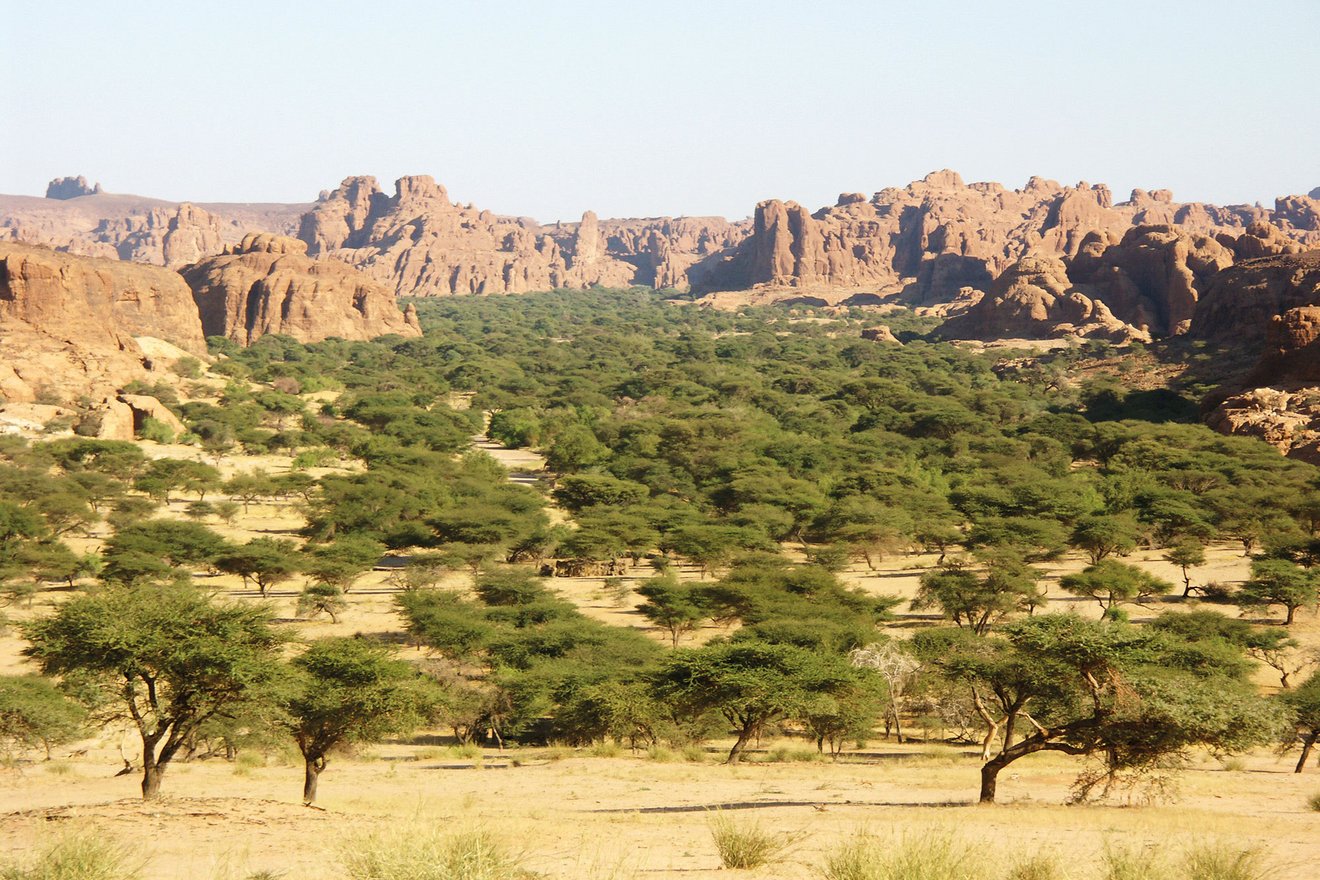Earth´s orbit and greenhouse gas concentrations influence African humid periods
Climate archives across North Africa reveal alternating arid and humid environmental conditions during the last several million years. The dry phases likely resembled current hyper-arid landscapes, whereas the wet phases known as African humid periods sustained much more surface water and greater vegetated areas that “greened” large parts of the Sahara region. The humid periods and greening Sahara occurred with a period of roughly 20,000 years except for glacial maxima when the Sahara was even larger than today. Geological evidence from the Mediterranean Sea showed the last five African humid periods differed in strength, duration and rate of change. To understand the causes of such differences, the study´s authors — Mateo Duque Villegas, Martin Claussen, Victor Brovkin, and Thomas Kleinen — performed simulations of the past 190,000 years. For this purpose, they used an Earth system model of medium complexity: CLIMBER-2.
With the help of the simulations, they were able to quantify the influence of variations in the Earth´s orbit, varying greenhouse gas concentrations in the atmosphere, and varying ice sheets on the degree of Saharan greening. The researchers found that the change in Earth´s orbit is the dominant factor in the greening of the Sahara once a certain insolation threshold associated with it is exceeded.
This threshold, calculated by the model, is consistent with estimates from Mediterranean Sea sapropels (layers of oxygen poor sediment layers). This has not been seen in any modeling study to date. The authors also found that the maximum rates of change in simulated vegetation extent at the onset and termination of an African humid period correlate strongly with the rate of change of the orbital forcing. The onset of modelled African humid periods usually happens faster than termination, which can be seen in some geological data. The analysis also shows that the influence of changes in greenhouse gases and ice sheets appears to be of secondary importance for vegetation dynamics — in contrast to Saharan temperature variations, for which greenhouse gases and ice sheets turn out to be almost as important as changes in the Earth´s orbit.
![[Translate to English:] Abbildung 1: Korrelation des "monsoon forcing index" Figure correlation of the "monsoon forcing index](/fileadmin/04_Kommunikation/01_Aktuelles/2022/220926_Mateo_Duque/Abbildung_Paper_Mateo_Duque.png)
Using the analysis, the authors detected that the threshold for Saharan greening — which is related to the change in solar irradiance due to the Earth´s varying orbit — decreases with increasing greenhouse gas concentration in the atmosphere (Fig. 1). That is an interesting result regarding possible future changes in the Sahara in a greenhouse-gas induced warmer world. For the next 100,000 years, the variations in Earth´s orbit will be smaller than during the last 190,000 years, and the insolation threshold for the onset of a Saharan greening will be crossed only in some 60,000 years, provided the greenhouse gas concentration is kept at preindustrial value. Therefore, the authors extended their paleo simulations into the future using various scenarios of greenhouse gas concentration increase. These simulations show that the predicted threshold in orbital forcing drops considerably, such that a greening of the Sahara can occur already in the 21st century.
Original publication
(journal highlight)
Duque-Villegas, M., Claussen, M., Brovkin, V. & Kleinen, T. (2022). Effects of orbital forcing, greenhouse gases and ice sheets on Saharan greening in past and future multi-millennia. Climate of the Past. 18, 1897–1914. doi:10.5194/cp-2022-26
Contact:
Mateo Duque Villegas
Max Planck Institute for Meteorology, International Max Planck Research School on Earth System Modelling
email: mateo.duque@mpimet.mpg.de
Prof. Dr. Martin Claussen
Max Planck Institute for Meteorology
email: martin.claussen@mpimet.mpg.de

